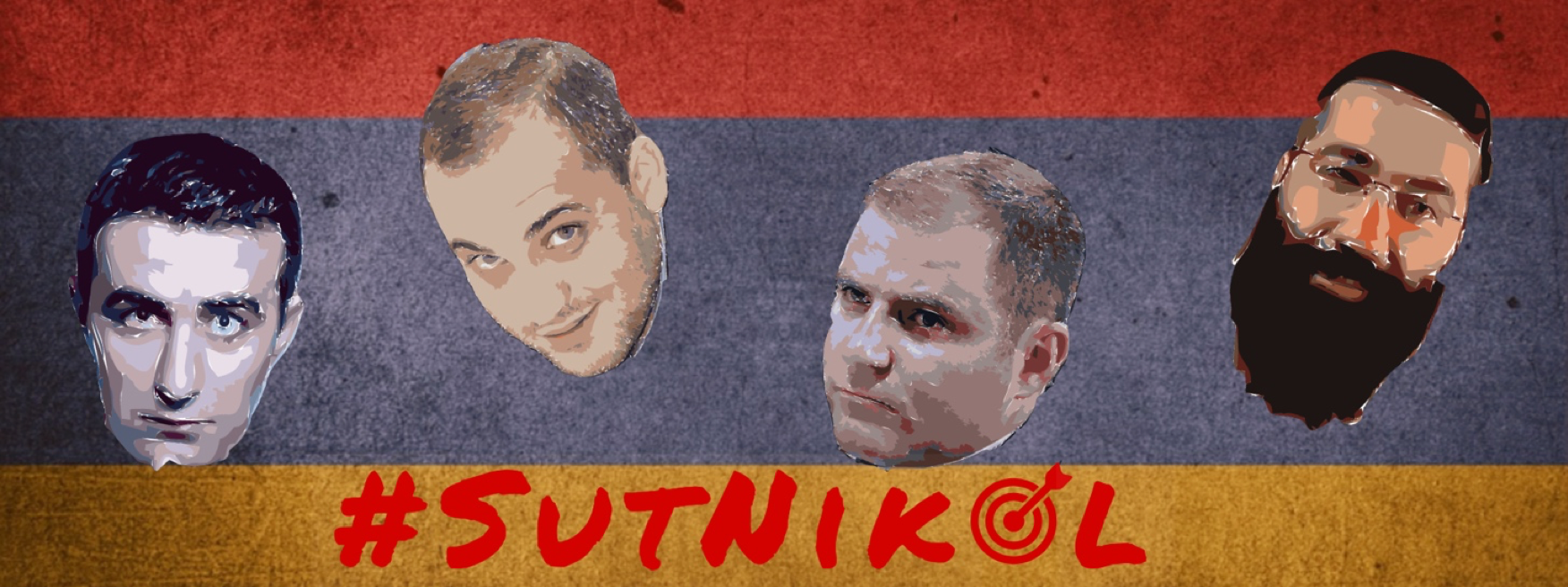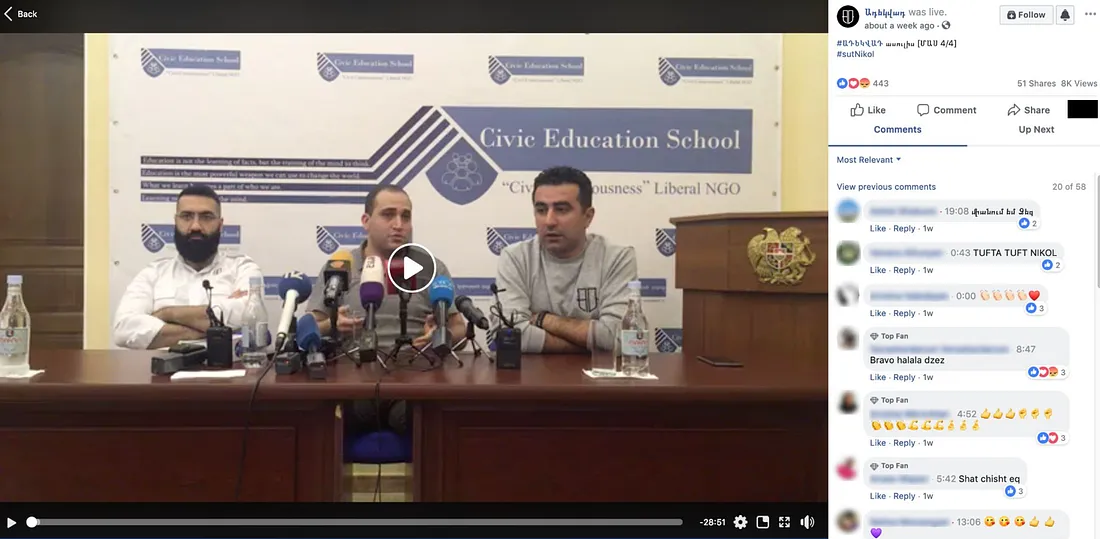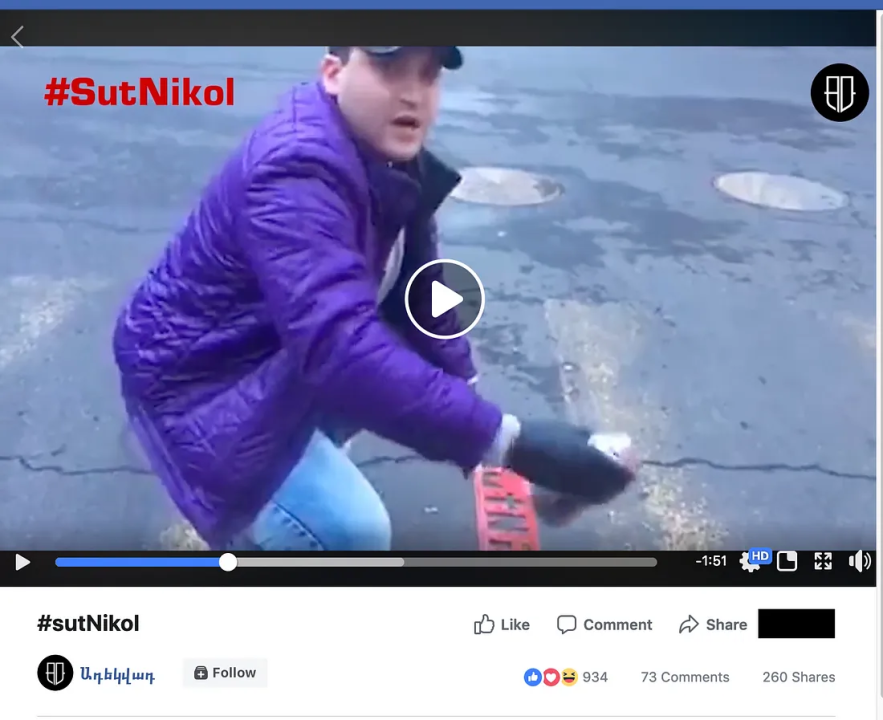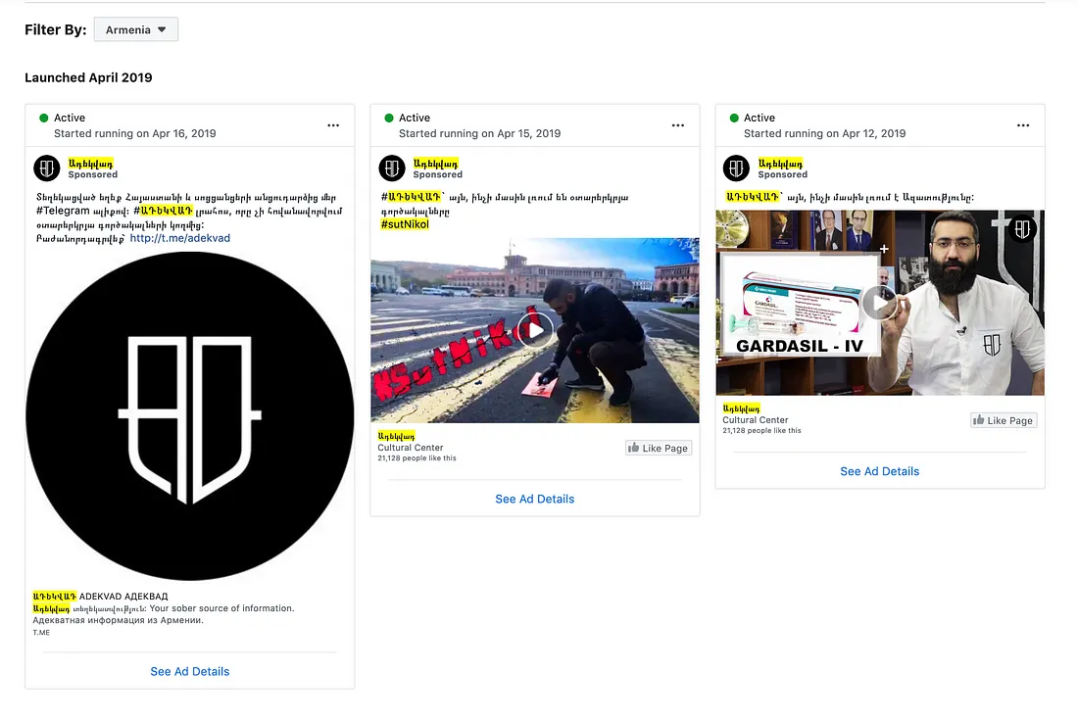Armenia Assailed by Deceptive “Fact-Checking” Groups, Part 2: The Coordination
The operators of the Adekvad and AntiFake.am pages openly coordinated in their influence campaign
Armenia Assailed by Deceptive “Fact-Checking” Groups, Part 2: The Coordination

BANNER: (Source: @ZKharazian/DFRLab)

Adekvad also posted a two-minute video on its page of footage compiled and edited from the longer livestream of the men’s spray-painting campaign. The video prominently featured Narek Samsonyan of the NGO behind AntiFake.am.
The edited video had been viewed 35,000 times and received 854 reactions, 226 shares, and 68 comments as of April 18.

That the known operators of both initiatives appeared together on several occasions documented online suggests that coordination between the two groups was explicit and open: Adekvad and AntiFake.am presented themselves as a united front for the #SutNikol campaign.
Anti-Gardasil Vaccine Content on Both Pages
In addition to coordinating on joint public appearances and engagements, the pages likely coordinated on content as well. In a particularly brazen example, both pages featured narratives discouraging Armenians from obtaining the Gardasil-IV vaccine, which prevents HPV infection, a major cause of cervical cancer.
While AntiFake.am’s anti-Gardasil content appeared in an article published on its website, which was then amplified via the outlet’s Facebook page, Adekvad’s anti-Gardasil content appeared in advertisement form. On March 7, Facebook announced plans to curb vaccine-related misinformation on the platform by rejecting ads that spread misinformation about vaccines.

The amount of open-source evidence hinting at a level of coordination between the Adekvad and AntiFake.am pages raised an important question: if the pages’ operators cooperated closely on the #SutNikol campaign as well as other initiatives, why would they risk splitting their audience in two by maintaining two separate pages?
An analysis of both pages’ total post count separated by post type may offer some insight. In the roughly 30-day period from March 17-April 19, 2019, the pages focused on different types of content. While AntiFake.am almost exclusively shared photos and links, Adekvad devoted itself primarily to sharing video content, with a particular emphasis on Facebook Live videos. In this sense, there appeared to be a “division of labor” between the two pages in terms of post type.

Simultaneous Ad Campaigns
Both pages ran advertisements, although the content of the ads differed. In addition to the anti-Gardasil ad, the Adekvad page had two additional ads running at the time of this analysis.

AntiFake.am was running two ads of its own, as well.

Adekvad and AntiFake.am each ran ads that included a call to action to “follow our page,” suggesting that both pages were engaging in active audience-building measures.
Coordination in the Open
In typical cases of coordinated inauthentic activity online, the operators of the online assets go to great lengths, albeit sometimes unsuccessfully, to obscure their coordination. The #SutNikol campaign and other related initiatives from Adekvad and AntiFake.am are largely an exception to that rule. In the Armenian online media environment, at least four individuals leveraged their various online assets to coordinate freely and openly. Using Facebook Live, they often placed themselves in the same place at the same time, engaged in a shared pursuit: propagating biased narratives — and sometimes outright false ones — about political, economic, and social issues in Armenia.
Facebook’s own definition of “coordinated inauthentic behavior” refers to instances in which individuals, pages, or groups “work together to mislead others about who they are or what they are doing.” Many of the actors in this effort did not obscure their identities or their coordination with one another. In at least one case, however — the domain registrant and IP location information for AntiFake.am — the DFRLab found evidence that they did. This operation misled the public about the nature of its content and its underlying mission; it may also have been disingenuous about a possible foreign connection.
Register for the DFRLab’s upcoming 360/OS summit, to be held in London on June 20–21. Join us for two days of interactive sessions and join a growing network of #DigitalSherlocks fighting for facts worldwide!

